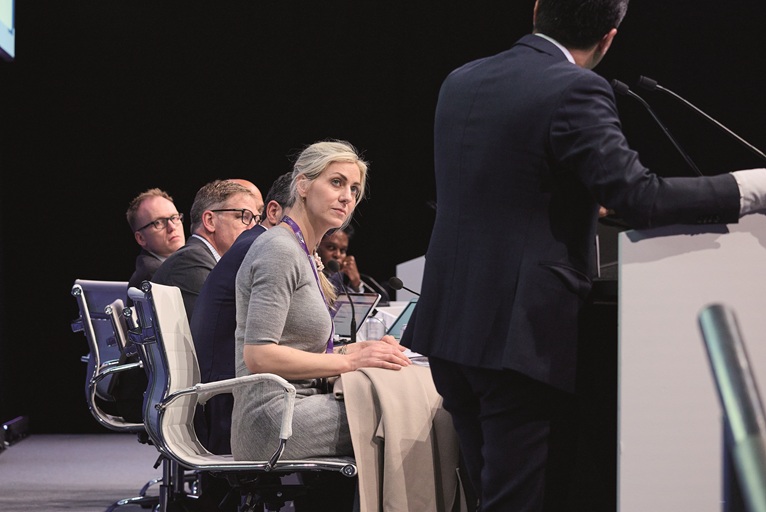
In response to an audience poll during Thursday morning’s venous and lymphatic programme, 72% of respondents either disagreed or strongly disagreed with the statement ‘In my country, the leg ulcer pathway is working well’, highlighting the urgency of an opening session focused on forging optimal venous care pathways.
Central to optimal care is a high-quality team, Manj Gohel (Cambridge, United Kingdom) stated during the opening talk, in which he underscored the importance of taking a multidisciplinary, collaborative approach to venous disease management.
Gohel homed in on the impact of a high-quality team on efficiency, noting this as a key consideration in the United Kingdom. “We are constantly being pressured and driven to try and make things more efficient, and guess what, having the right people on the right team is essential to do that.”
The presenter also underlined the necessity of collaborating across hospital department lines, despite the difficulties of doing so. “The natural problem here is protectionism,” he said, before stressing that “there is enough work to go around in almost every healthcare setting” due to the prevalence of venous disease.
During discussion time, Naseer Ahmad (Manchester, United Kingdom) commented on the positive results he has seen by implementing a multidisciplinary team approach in the management of diabetic and non-diabetic foot ulcer care in his city, asking Gohel his opinion on whether this would be a feasible approach for all lower-leg wounds.
Gohel responded that Ahmad and colleagues’ work in Manchester is “inspirational” and “is clearly the model that we have to [implement going] forward”.
Later in the discussion, session anchor and CX co-chair Erin Murphy (Charlotte, United States) offered a perspective from across the Atlantic, noting the challenge of patients getting “stuck” in the system and going back and forth between departments.
In the following talk, Daniel Carradice (Hull, United Kingdom) proposed some strategies for overcoming the barriers to effective ulcer care pathways. He highlighted a “disconnect between clinical services, outcomes and evidence-based practice” that must be overcome.
As a proponent of patient-centred care, Carradice commented that it is “important to hand control of the pathway to patients, control over their referral, who sees them, when and where, and [help] them to understand the part they play in their healing journey”.
Carradice shared an example of a successful pathway that has been implemented at Guy’s and St Thomas’ Hospital in London, United Kingdom, as well as positive experiences from his centre north of the British capital in Hull, with the HEAL wound service. Concluding, Carradice summarised that effective care pathways such as these can reduce workload, improve clinical effectiveness and save money.
Later in the session, the audience heard from Aleksandra Jaworucka-Kaczorowska (Gorzow Wielkopolski, Poland) on evidence-based approaches to optimising treatment pathways for pelvic venous disorders, highlighting the importance of proper patient selection, diagnostics, treatment strategy and technique.
Raghu Kolluri (Columbus, United States) also took to the podium, underlining strategies for avoiding unnecessary investigations for patients with swollen legs. The speaker emphasised the importance of holistic patient care. “I always tell my patients that the first word in the condition you have called chronic venous insufficiency is chronic,” he said. “There’s nothing immediate that we need to do, but, at the same time, we need to have a long-term plan.”
Efthymios Avgerinos (Athens, Greece) delivered two presentations during the session, first on an optimal algorithm for acute deep vein thrombosis (DVT) treatment and early thrombus removal, before closing the session with a talk on possibilities and challenges associated with ultrasound artificial intelligence (AI) in acute DVT diagnosis, specifically the ThinkSono technology.
“Do you think [this technology] is going to replace current DVT pathways, or do you think it’s going to extend diagnostic possibilities?” Gohel asked.
“This will be complementary in a busy emergency room,” Avgerinos responded, while stressing the need to validate the available preliminary data.
Moderator Stephen Black (London, United Kingdom) raised concerns about false negatives with ThinkSono, to which Avgerinos noted that “you’re not going to get 100%,” even with standard ultrasound, and that the AI data are “getting better” as time goes on.








